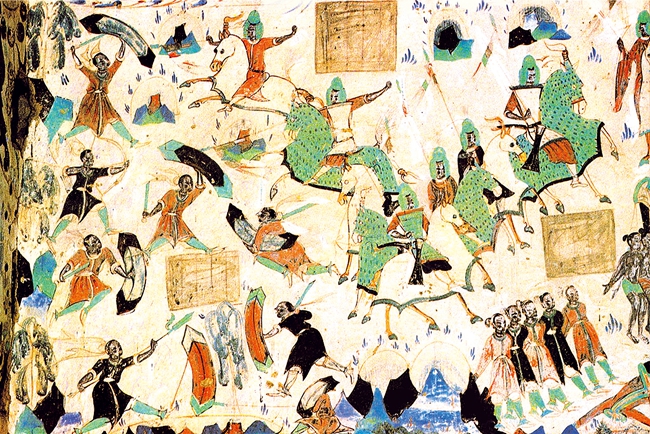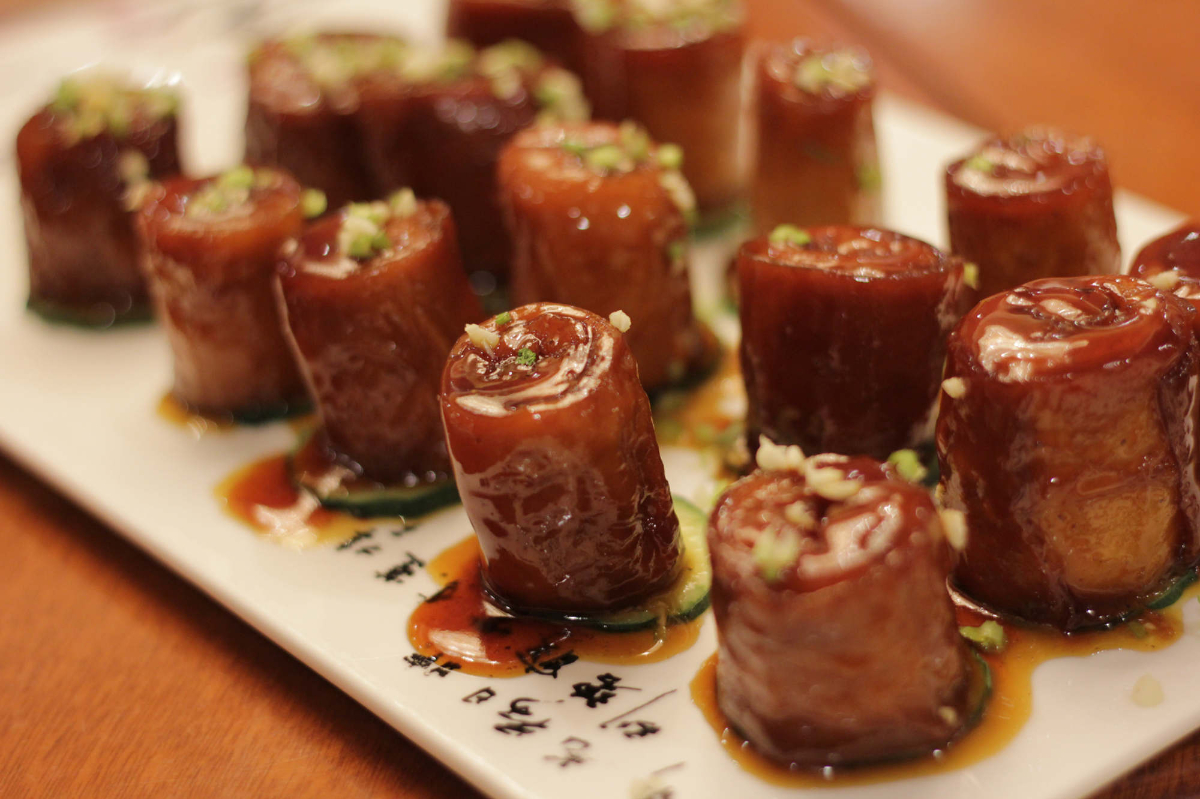The History of China (03)- Imperial China

The Imperial China Period can be divided into three sub-periods: Early, Middle, and Late. Major events in the Early sub-period include the Qin unification of China and their replacement by the Han, the First Split followed by the Jin unification, and the loss of north China. The Middle sub-period was marked by the Sui unification and their supplementation by the Tang, the Second Split, and the Song unification. The Late sub-period included the Yuan, Ming, and Qing dynasties.
● Qin dynasty (221–207 BC)
Qin Dynasty is a landmark in China history, and it is the first feudal dynasty. It unites the whole country from the south, Guangxi and Guangdong to the north for the first time, which has great meanings in politics, and implement unified systems. It applies a series of systems in agriculture, military, economic, politics and culture, and improves people’s living standard and the civilization level of the whole country. In this dynasty, people have a unified written style, xiaozhuan or seal script, a unified measure system in weight and length.
● Han dynasty (202 BC – AD 220)
With the famous emperor Liu Bang as its founder by in 206 B.C., the Han Dynasty is the first dynasty to embrace the philosophy of Confucianism, which becomes the ideological underpinning of all regimes until the end of imperial China.
● Three Kingdoms (AD 220–280)
This is a period of civil wars. Three kingdoms are Wei, Shu, Wu which have overlapping reigns during the period from 220 A.D. -280 A.D.).
After Cao Cao reunified the north in 208, his son proclaimed the Wei dynasty in 220. Soon, Wei's rivals Shu and Wu proclaimed their independence, leading China into the Three Kingdoms period. This period was characterized by a gradual decentralization of the state that had existed during the Qin and Han dynasties, and an increase in the power of great families.
In 266, the Jin dynasty overthrew the Wei and later unified the country in 280, but this union was short-lived.
● Jin dynasty (AD 266–420)
The Jin dynasty was severely weakened by internecine fighting among imperial princes and lost control of northern China after non-Han Chinese settlers rebelled and captured Luoyang and Chang'an. In 317, a Jin prince in modern-day Nanjing became emperor and continued the dynasty, now known as the Eastern Jin, which held southern China for another century. Prior to this move, historians refer to the Jin dynasty as the Western Jin.
● Northern and Southern dynasties (AD 420–589)
In the early 5th century, China entered a period known as the Northern and Southern dynasties, in which parallel regimes ruled the northern and southern halves of the country.
Despite the division of the country, Buddhism spread throughout the land. In southern China, fierce debates about whether Buddhism should be allowed were held frequently by the royal court and nobles. By the end of the era, Buddhists and Taoists had become much more tolerant of each other.
● Sui dynasty (AD 581–618)
The Sui Dynasty( 581 A.D. to 618 A.D.)unites China together again and sets up many institutions that are adopted by its successors, and also formulates the imperial examination system used for over one thousand years. The Grand Canal from Beijing to Hangzhou is built at this dynasty, which is a great water project, and has significances in military, economics and agriculture.
● Tang dynasty (AD 618–907)
The Tang Dynasty ( 618 A.D. to 907 A.D.) is the most prosperous period and the culture in this time has a significant influence to the modern China. Buddhism becomes the predominant religion and is adopted by the imperial family and believed by many of the common people. The trade in Tang Dynasty helps this ancient country develop into a necessary country not only in the Asia but also in the world. The ancient city Xi’an has many tour spots telling glories and stories about this dynasty.
● Five Dynasties and Ten Kingdoms (AD 907–960)
The period of political disunity between the Tang and the Song, known as the Five Dynasties and Ten Kingdoms period, lasted from 907 to 960. During this half-century, China was in all respects a multi-state system. Five regimes, namely, (Later) Liang, Tang, Jin, Han and Zhou, rapidly succeeded one another in control of the traditional Imperial heartland in northern China. Among the regimes, rulers of (Later) Tang, Jin and Han were sinicized Shatuo Turks, which ruled over the ethnic majority of Han Chinese. More stable and smaller regimes of mostly ethnic Han rulers coexisted in south and western China over the period, cumulatively constituted the "Ten Kingdoms".
● Song, Liao, Jin, and Western Xia dynasties (AD 960–1234)
In 960, the Song dynasty was founded by Emperor Taizu, with its capital established in Kaifeng (also known as Bianjing). In 979, the Song dynasty reunified most of the China proper, while large swaths of the outer territories were occupied by sinicized nomadic empires. The Khitan Liao dynasty, which lasted from 907 to 1125, ruled over Manchuria, Mongolia, and parts of Northern China. Meanwhile, in what are now the north-western Chinese provinces of Gansu, Shaanxi, and Ningxia, the Tangut tribes founded the Western Xia dynasty from 1032 to 1227.
Within the Liao Empire, the Jurchen tribes revolted against their overlords to establish the Jin dynasty in 1115. In 1125, the devastating Jin cataphract annihilated the Liao dynasty, while remnants of Liao court members fled to Central Asia to found the Qara Khitai Empire (Western Liao dynasty). Jin's invasion of the Song dynasty followed swiftly. In 1127, Kaifeng was sacked, a massive catastrophe known as the Jingkang Incident, ending the Northern Song dynasty.
Later the entire north of China was conquered. The survived members of Song court regrouped in the new capital city of Hangzhou, and initiated the Southern Song dynasty, which ruled territories south of the Huai River. In the ensuing years, the territory and population of China were divided between the Song dynasty, the Jin dynasty and the Western Xia dynasty. The era ended with the Mongol conquest, as Western Xia fell in 1227, the Jin dynasty in 1234, and finally the Southern Song dynasty in 1279.
● Yuan dynasty (AD 1271–1368)
The Yuan Dynasty( 1271 A.D. to 1368 A.D.) is founded by a Mongolian Genghis Khan, the famous Emperor not only in China, but also all over the world. It is also the first dynasty created by the Chinese ethnic groups. In this dynasty, the territory of China is in a great expansion, but its ruling makes many conflicts to ethnic groups.
● Ming dynasty (AD 1368–1644)
Throughout the Yuan Dynasty, which lasts less than a century, there is a relatively strong sentiment among the populace against the Mongol rule. The frequent natural disasters since the 1340s finally accelerate peasant revolts. The Yuan Dynasty is eventually overthrown by the Ming Dynasty( 1368 A.D. to 1644 A.D.) in 1368. The first Emperor of the Ming Dynasty is Zhu Yuanzhan, who reforms the politic system for the benefit of the royal family. His son, Zhu Di moved the capital from Nanjing to Beijing, and built the Forbidden city.
● Qing dynasty (AD 1644–1911)
The Qing Dynasty( 1644 A.D. to 1912 A.D.) is the last Chinese dynasty in history. It is also a mark of the beginning of modern China. The Qing Dynasty is established by the Manchu People (Nuzhen People). Within about 268 years, it is ruled by 11 emperors including Kangxi, Yongzheng and Qianlong who are very famous for their political policies. In the late period of this dynasty, China is invaded by foreign countries, and has a very tough time.









